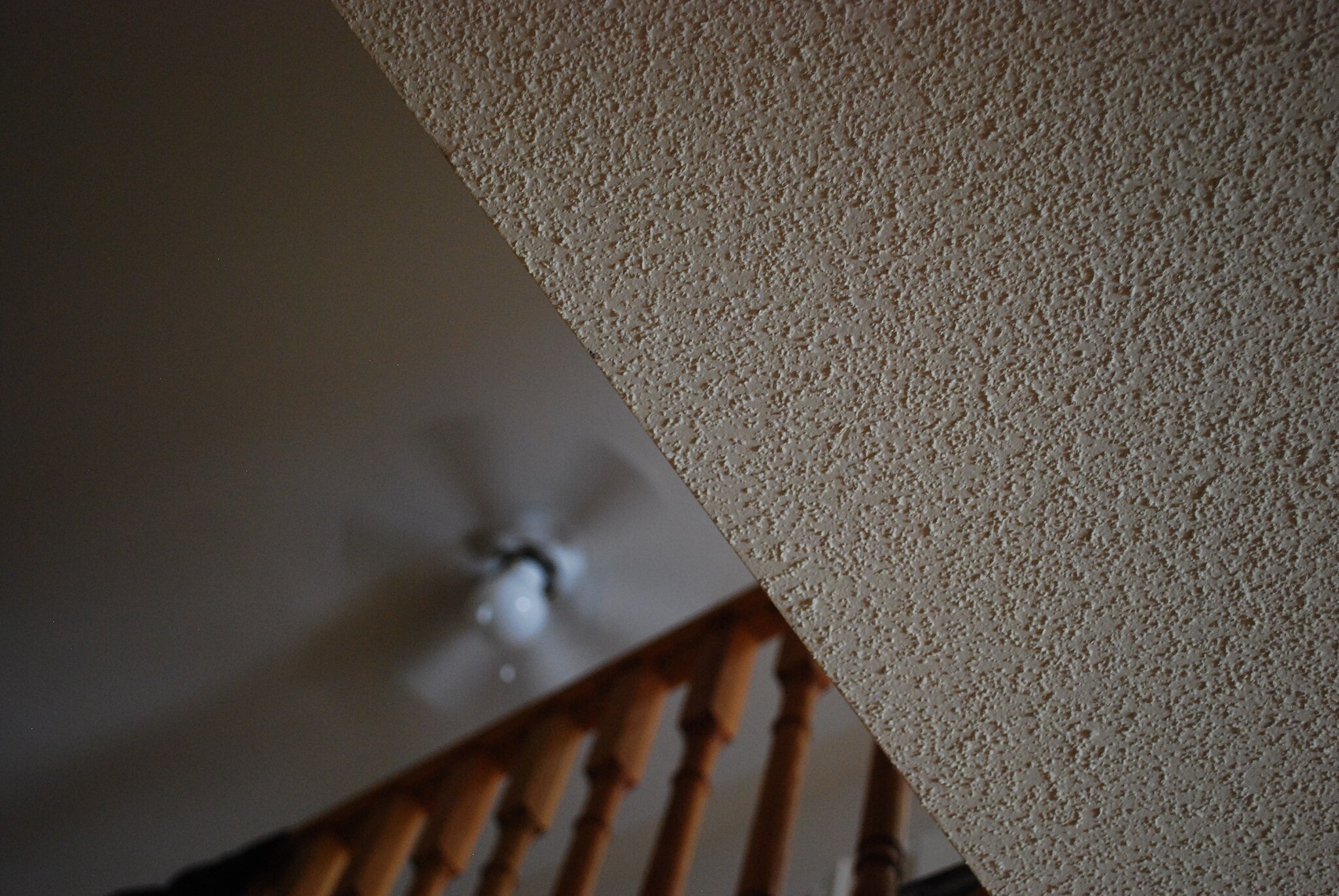Featured image credit: Enoch Leung
Popcorn ceilings are the bane of tenants across the country – the world even. Sometimes referred to as stipple or acoustic ceilings, they’ve earned their most popular moniker for their vague resemblance to a sea of white fluffy popcorn. But these ceilings bear a closer resemblance to cottage cheese… maybe even frozen television static if the lighting’s just right. That “popcorn” texture is usually created by tiny pieces of polystyrene or vermiculite along with some additives that are, in some cases, outright dangerous. But they were all the rage for decades. They also couldn’t live further from modern interior fashions. But live they do. So, today we’re going to look at how to safely reject (or finally accept) your popcorn ceiling.
Weighing the Pros and Cons of Popcorn Ceilings
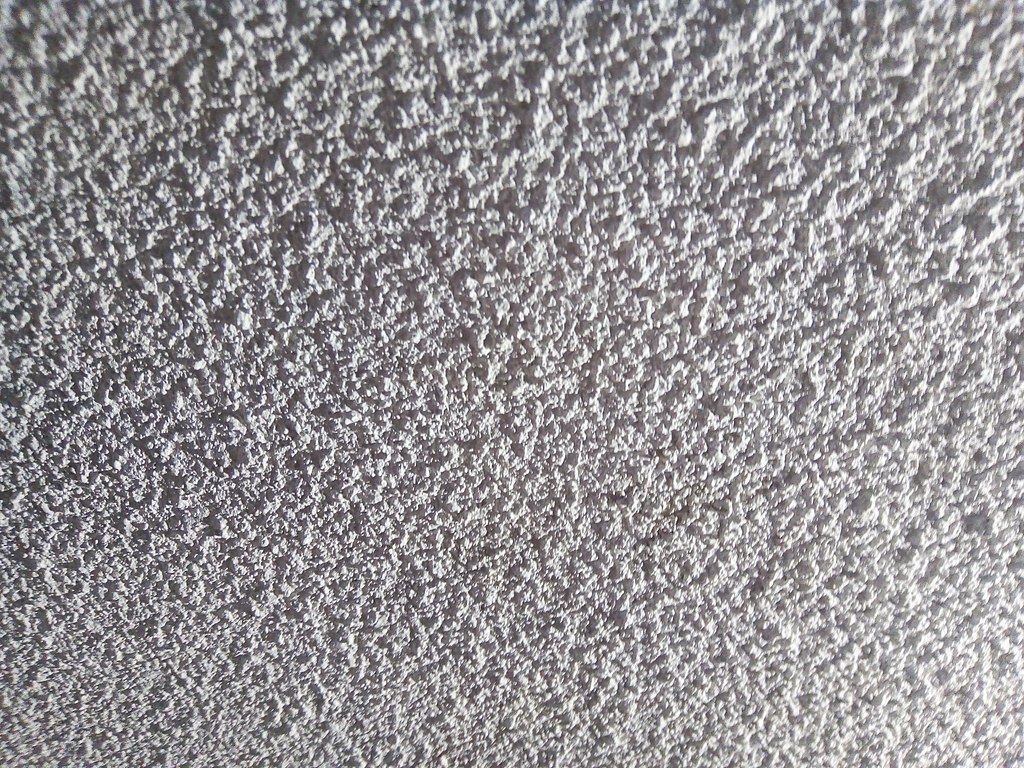
Your first question when seeing a popcorn ceiling very well could be: “Why?” But there are actually several reasons popcorn ceilings had their day in the sun. Popcorn ceilings are able to:
- Act as a sound barrier (hence the alternate “acoustic ceiling” name)
- Remain more affordable than other popular styles of the time
- Require shorter labor times than other popular styles of the time
- Easily hide imperfections
- Create a modicum of fire-resistance
But popcorn ceilings have their fair share of consequences too, one a little more grave than a fashion faux pas. Before we get into that, let’s look at the more surface-level problem with popcorn ceilings. They tend to:
- Scatter harsh light unfavorably, making it harder to soften and control
- Create challenges for cleaning and maintenance
- Collect dust and allergens
- Be challenging to repair due to consistency variations (fine, medium, and coarse grades exist)
- Discolor with time
Saving the Asbestos for Last
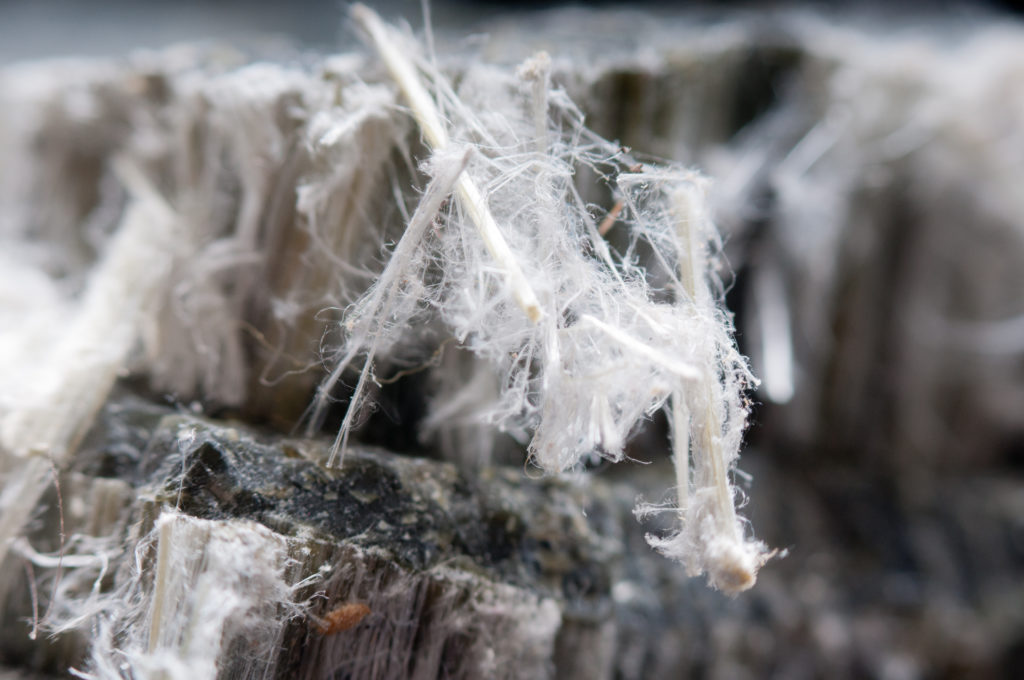
Now for the big drawback of popcorn ceilings. Until the Clean Air Act of 1978, these distinctive ceilings commonly counted asbestos among their ingredients. Yes, the carcinogen asbestos. And plenty of us live in popcorn ceiling-adorned apartments and homes that were built before 1978.
But if your domicile was built post-’78, don’t sigh in relief too quickly. To avoid financial hardships on developers, the Clean Air Act gave some leeway on outlawing asbestos-tainted sprays. Manufacturers were permitted to clear out their stock of the hazardous material, meaning popcorn ceilings were incorporating asbestos well into the 1980s.
As you can imagine, the asbestos revelation sent the popularity of popcorn ceilings plummeting. Even as manufacturers hurried to create an alternative made from Styrofoam or paper, the damage was done. The fad was over.
How to Tell if Your Popcorn Ceiling Contains Asbestos
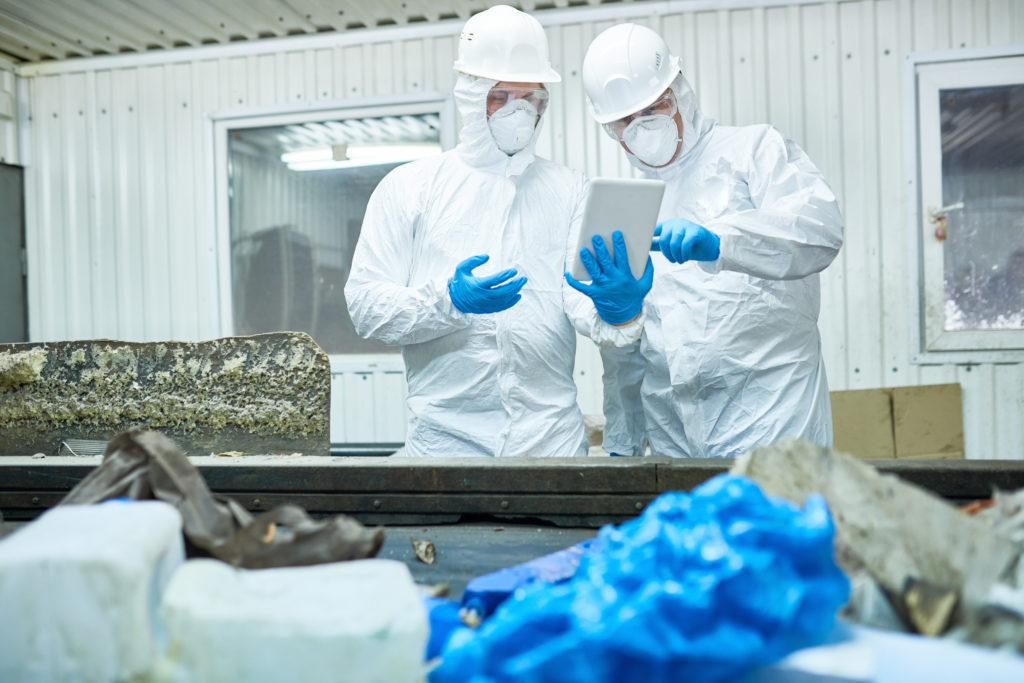
If you’re now eying your pre-’78 popcorn ceiling like the precariously perched blade of a guillotine, don’t panic. Popcorn ceiling particles can be tested for traces of asbestos. You need only carefully scrape a minute sample of the popcorn ceiling into a plastic bag and send the results to a lab accredited by the EPA. You can even purchase home testing kits from many reputable hardware stores.
So what if asbestos is discovered in your popcorn ceiling sediment? It’s not great, but it’s not necessarily terrible either. In most cases, you don’t stand a serious risk of asbestos exposure unless the ceiling is disturbed in some way. This usually isn’t an immediate problem, but who knows when the next earthquake could shake something free?
In addition, older ceilings can deteriorate, releasing the destructive fibers into your breathing space. And inhaling asbestos fibers can cause permanent scarring of the lungs, not to mention cancer. So, you can see why some people still don’t feel like sleeping every night beneath the least appetizing popcorn of all time.
Taking Action
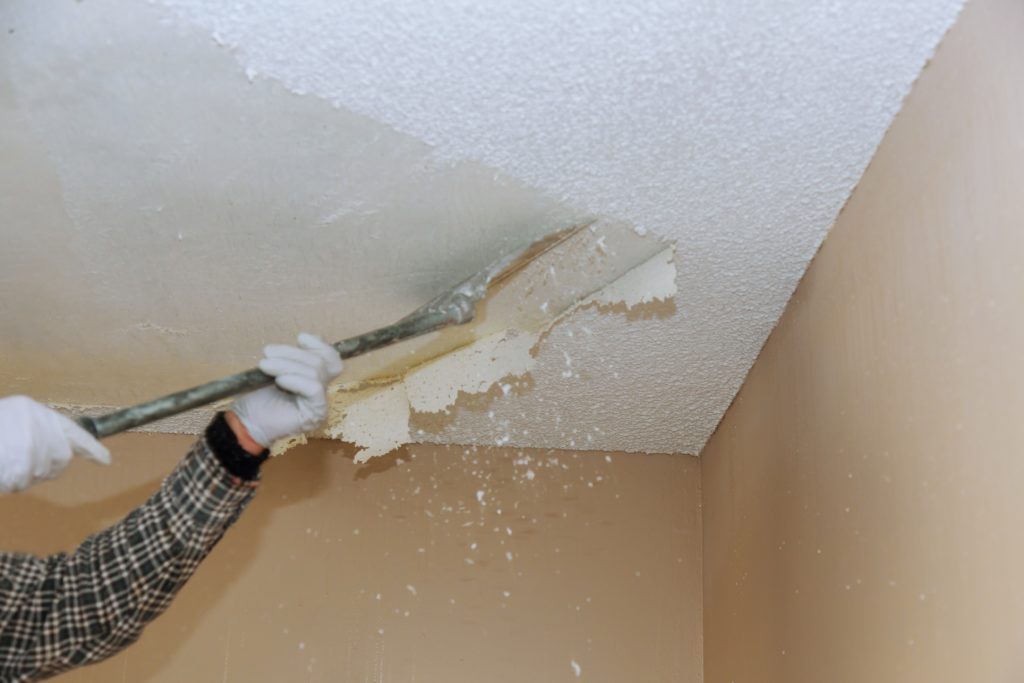
Some people decide to take matters into their own hands by getting rid of their popcorn ceilings. But you need to use caution; again, this is a cancer-causing substance. Before you do any DIY removal or renovation projects with your popcorn ceiling, it’s beneficial to confirm whether or not asbestos is present. From there, you need to decide whether it’s a job for the professionals or whether you’d prefer to try your own hand at it. Due to the hazardous nature of working with asbestos, professional services exist to safely remove and dispose of popcorn ceilings. These services average around $2,000, but this will hinge on the size and difficulty of the project.
How to Remove a Popcorn Ceiling
Removing a popcorn ceiling becomes significantly more difficult if it’s been painted. However, removing an unpainted popcorn ceiling is a relatively simple and straightforward, though tedious and time-consuming experience.
Steps to Remove Your Popcorn Ceiling
(1.) Remove or cover all exposed surfaces
(2.) Put on protective gear: goggles, masks, clothes that you won’t mind throwing away afterward
(3.) Liberally spray a small area of the popcorn ceiling with water to soften the material
(4.) Use a putty knife or trowel to scrape away the wet sediment
(5.) Repeat steps 3 and 4 until all of the popcorn build-up has been removed
(6.) Safely dispose of clothing and popcorn (check with your city to determine the proper method of asbestos disposal)
You can apply the same technique to painted popcorn ceilings, but a stripping solution will need to be applied first. Otherwise, the water won’t be able to penetrate the paint to properly soak the sediment. It’s integral that the water thoroughly soaks the sediment so that the hazardous asbestos microfibers aren’t released into breathable space when scraped.
Living with Popcorn Ceilings

If you’re not quite set on removing your popcorn ceiling, there are a few ways you can live with one as well. Let’s take a closer look at some alternatives to popcorn ceiling removal.
Painting Popcorn Ceilings
If the texture isn’t bothering you as much as the color, remember that a popcorn ceiling can be painted. This can also be an effective method of getting around the staining that plagues this type of ceiling.
How to Paint Your Popcorn Ceiling:
(1.) Use an ultra soft brush to remove any dust; you may need to use an extension for higher ceilings
(2.) Paint a coat of primer over the dust-free, textured surface
(3.) Allow time for primer to dry
(4.) Apply paint using a spray solution or thick paint roller
To paint a popcorn ceiling, it must be in decent condition, meaning no deterioration or flaking.
Remember to use extreme caution so as not to disturb the popcorn ceiling, risking the release of hazardous asbestos.
Covering Popcorn Ceilings
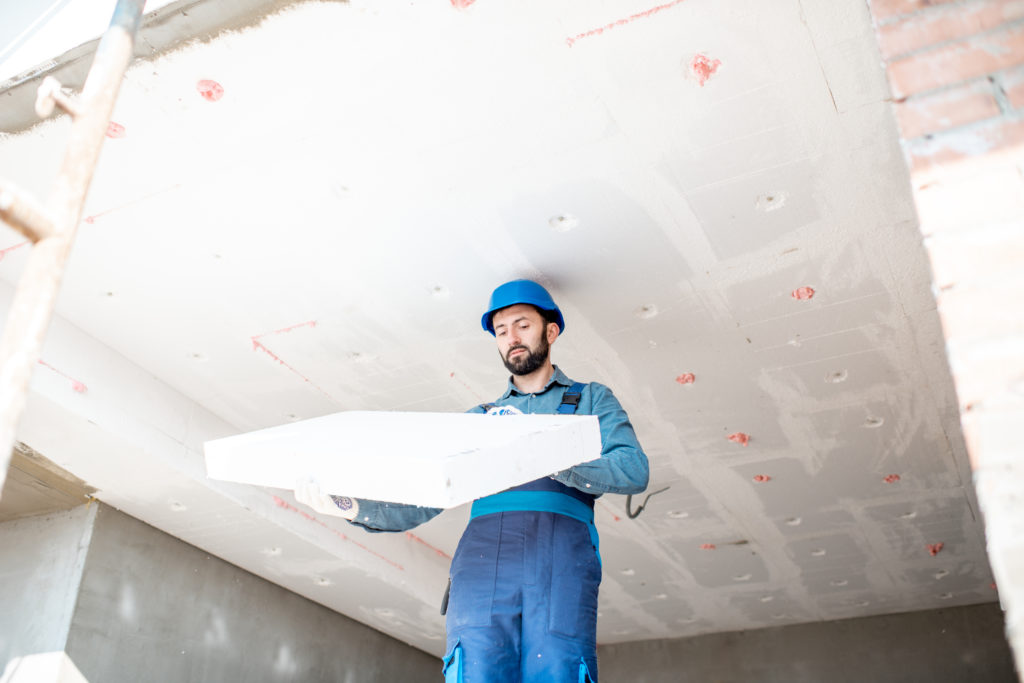
If you’re ashamed or afraid of your popcorn ceiling but don’t want to risk releasing asbestos by scraping it away, covering the ceiling may be your best option. You can effectively cover ceilings with a variety of materials including:
- Foam tiles
- Drywall
- Wood paneling
However, this is a more intensive job than simply painting your ceiling. Therefore, you may want to hire a professional.
Repairing Popcorn Ceilings
What if you’re perfectly fine with your popcorn ceiling, but it’s suddenly damaged? Perhaps it cracks following an earthquake or doing a move-in. The good news is that popcorn ceilings can be repaired. The bad news is that it’s very difficult to match the exact texture and color of the original ceiling. In such a case, you may want to return to our section above about painting popcorn ceilings. But if you’re just concerned with a quick fix at the moment, your local hardware store likely offers a variety of products designed specifically to patch damaged popcorn ceilings.
So love them, hate them, or maybe just tolerate them, popcorn ceilings are still frequently a part of life for tenants and owners across the world. But knowing the facts about these controversial ceilings can help us decide which of these categories we fall into. And, more importantly, how we move forward. So be knowledgeable, be stylish, and, above all, be safe!

